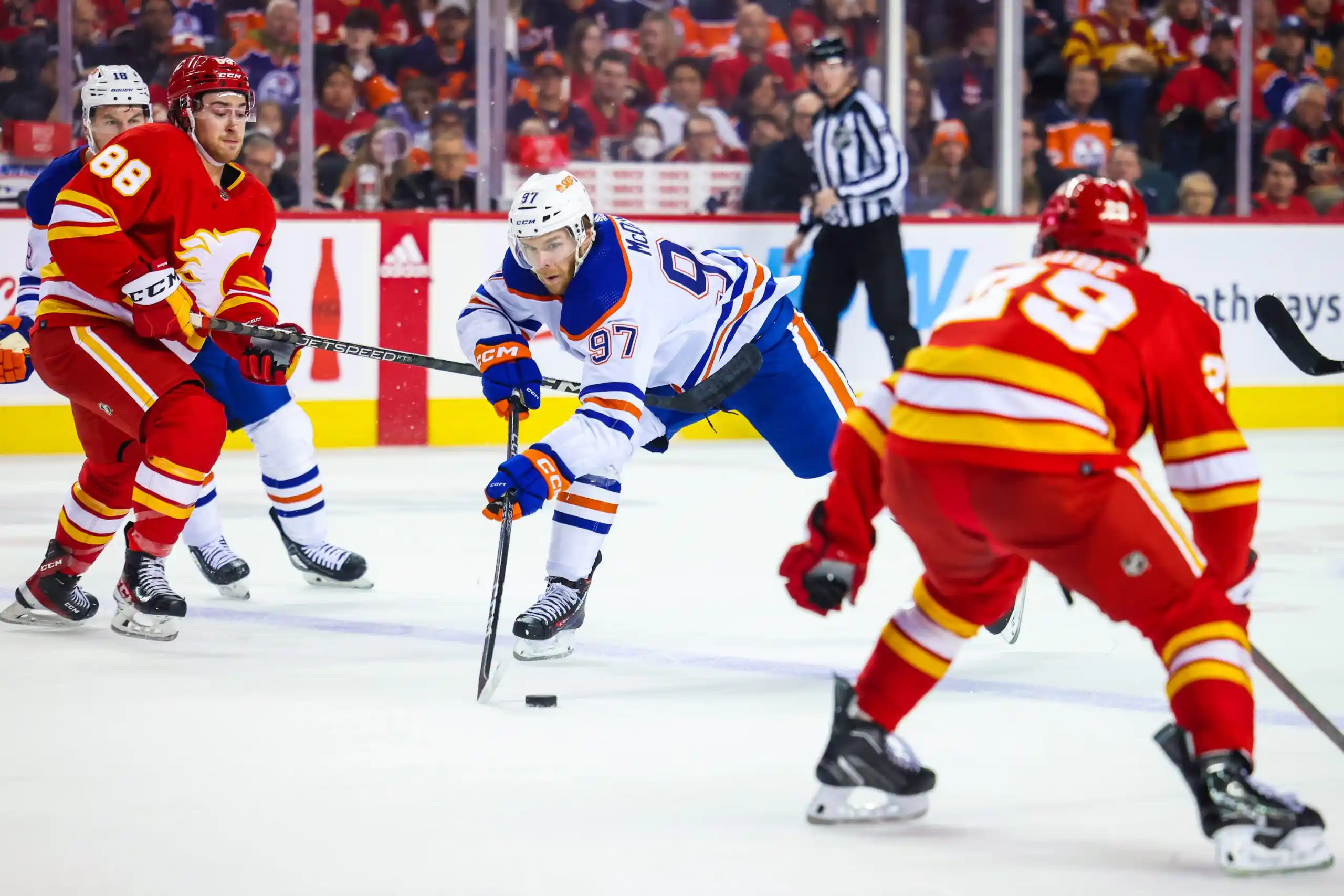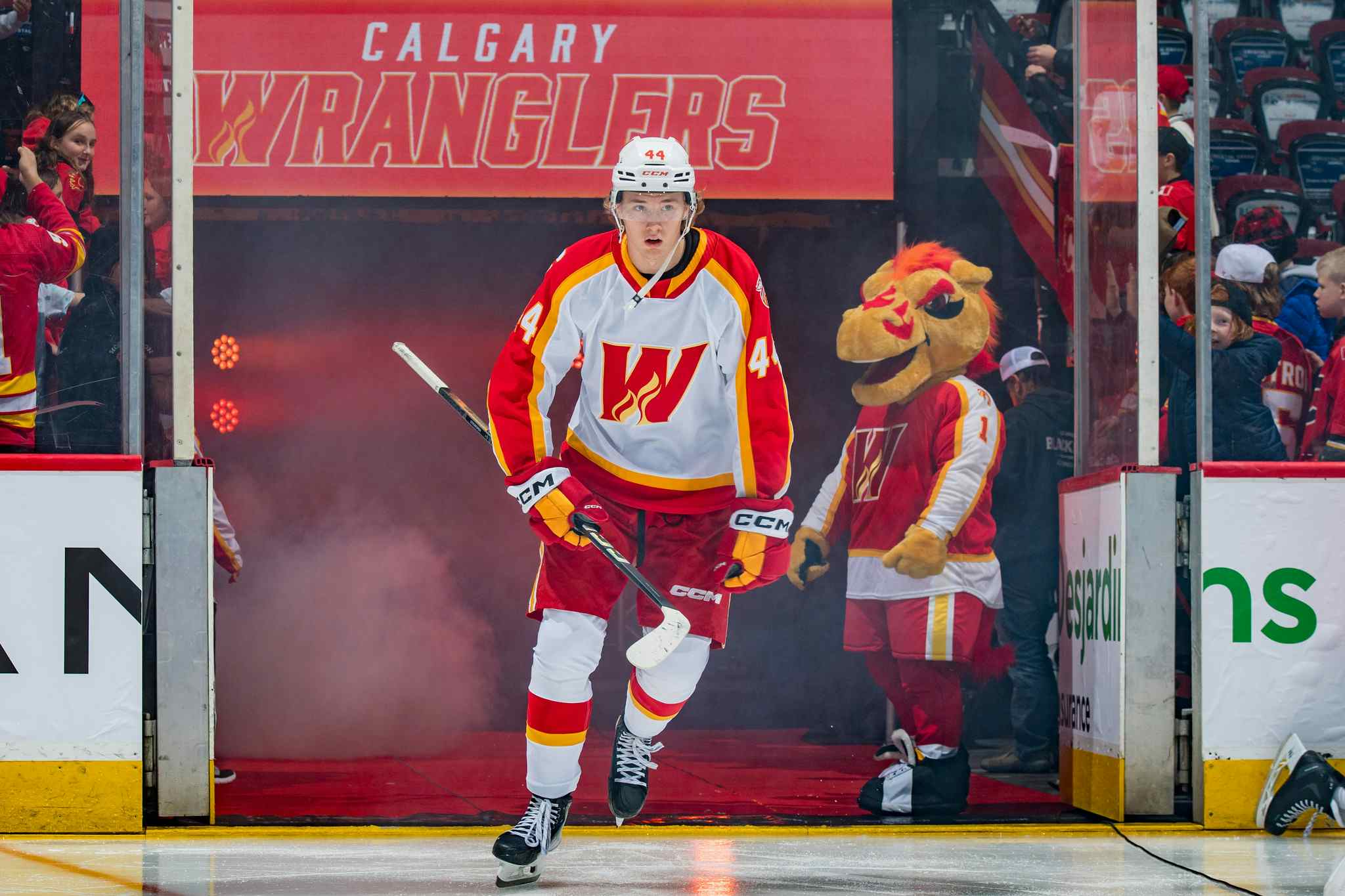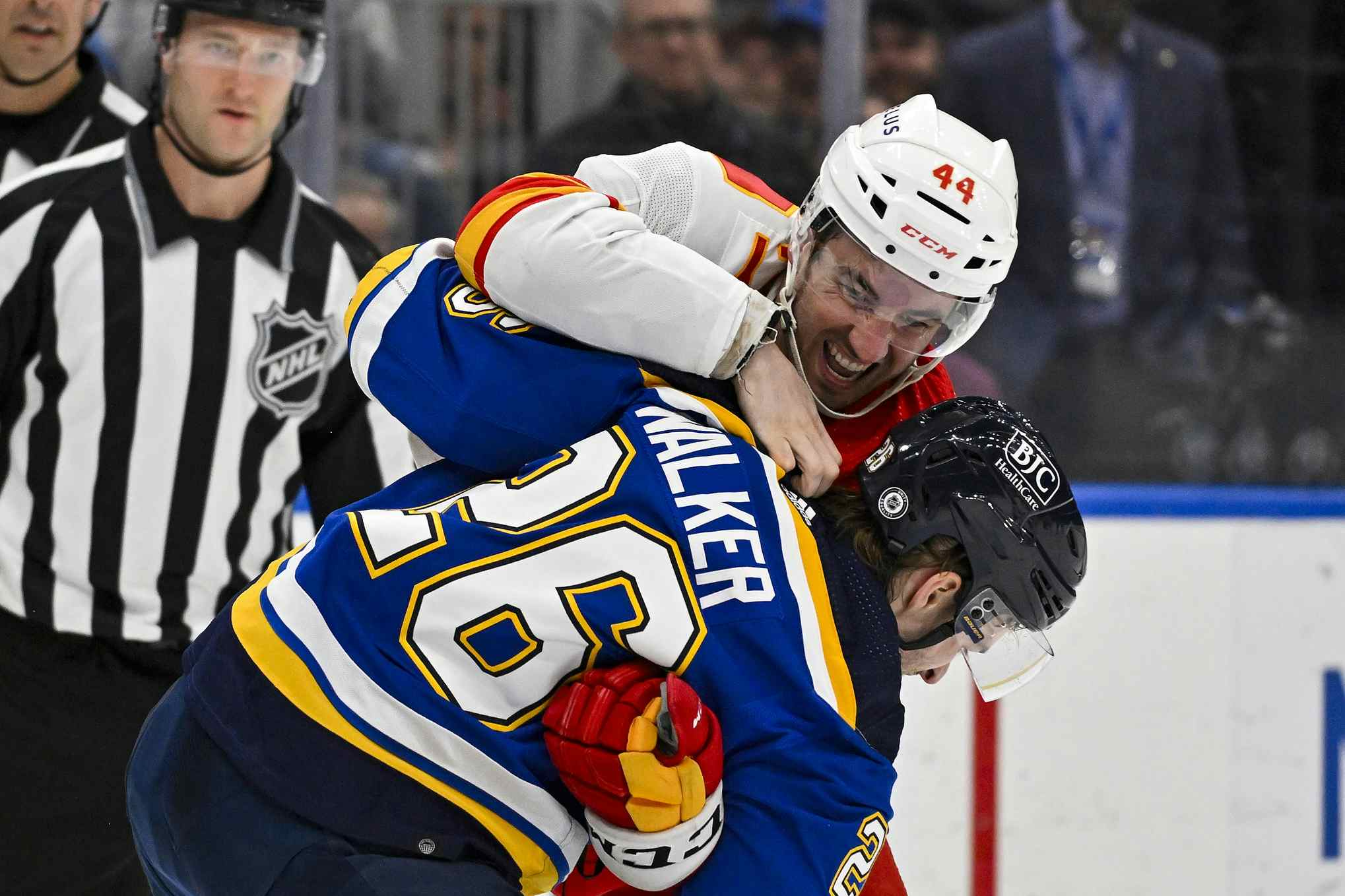3 reasons postseason hockey might return to Calgary this spring

Ask around, and you’ll find that nobody has been as vocal about predicting the demise of the 2014-15 Calgary also rans Flames as I’ve been.
The Flames rocketed right to the top of the Western Conference with a stellar start to the year, limped through a near-disastrous December, and have regained their footing of late. Currently Calgary is holding down a Wild Card playoff spot (by point percentage), and have a decent lead on the likes of the Los Angeles Kings, Dallas Stars, and Minnesota Wild.
Can they hang on? I’m still not betting on it and this is not to be mistaken for a mea culpa, but I am genuinely seeing more reason for optimism now than I was back in the halcyon days of late November, 2014. Click past the jump and permit me to explain.
1. Backlund’s Back Alright!
Oh my god he’s back again – Nick Carter
11 games ago Flames two-way ace Mikael Backlund, arguably the most under-rated defensive center in the game (a title he’s held at least since New York Islanders pivot Frans Nielsen became properly rated), returned to the lineup. Though he’s only played in 10 of those games (he was out of the lineup Monday with an illness), his impact has been immediate and enormous.
The 25-year-old centerman has managed five goals and five assists, and is scoring at a point-per-game rate. He’s consistently logging well over 17 minutes of ice-time. He’s back to being his suffocating self when the Flames are short-handed. Most importantly, for our purposes, he’s brought up the Flames’ underlying numbers more significantly than I would’ve expected.
For the season the Flames are a sub-45 percent Corsi For team, one of only three such clubs in the league. Those other teams – the Buffalo Sabres and the Colorado Avalanche – they’re not imposing and they’re certainly not making the playoffs. If you think the Flames are a true-talent 45 percent Corsi For team, you should bet against them qualifying for Stanley’s annual ball.
Corsi measures up all shot attempts both for and against at 5-on-5, and teams that get out-attempted to the extent that the Flames have this season, well, they generally don’t sustain a high-level of performance over 82 games. Sometimes the stars align and they do because of the hockey god’s fickle favour, or excellent special teams play, or dominant goaltending. When the whistles stop being blown in the postseason though, and officials let teams work it out at even-strength, even those blessed outlier teams are most often fodder for a first-round elimination.
Now here’s where things a little bit more interesting for the Flames. Since Backlund’s return – and take this with all of the Small Sample Size™ brand salt you have on hand – the Flames are a 47.9 percent team by score adjusted shot attempt differential. That’s still not very good, but you can work with that.
If Calgary can sustain that quality of play at evens over the last 32 games, that’s a workable number. Sub-45 percent, you’re pretty much dead in the water. You might win some games here and there (even the Sabres looked respectable for three weeks this season), but it’s a ticking time bomb of unsustainability. At 48 percent, and with quality special teams (edited: aside from the power-play – as Kent has rightly pointed out) and decent goaltending like the Flames have? That’s a different matter.
If they can stay healthy and keep it up, which I still think is a bit unlikely (but it’s not unthinkable by any means), they’ll have a fighting chance.
2. Johnny Trademark Drives Sales, (maybe) Percentages
The single biggest reason why I was so down on the Flames, even as they were atop the Pacific Division table early in the year, was their horses, or lack thereof, up front. I didn’t see anyway that the Flames would score enough to keep pace with the likes of Dallas, Minnesota, San Jose, even Vancouver.
Over the past few months my thinking has evolved somewhat, and it’s largely because Johnny be good.
Currently the Flames are 11th in the league in goals per game rate, but they’re also converting on 8.8 percent of their shots at 5-on-5. That’s a really high rate – the third best in the league – and it’s unlikely to last. I’ve long said that Calga-regression is unlikely to look like what we saw late last season with the Toronto Maple Leafs (who were bad defensively), and instead is likely to look like a series of 2-1 losses. It could still happen, but Gaudreau gives us some reason to believe that perhaps Calgary’s offence could have just enough oomph to power them to the postseason.
I’m a firm believer that there are forwards who set the table, and players who can feast. What I mean by this is that there are players who can help you control play (and drive shot attempt differential)- the Jonathan Toews’, Anze Kopitar’s, prime Henrik Sedin, Patrice Bergeron of the world – and then players who can capitalize off of the favourable scoring environment that the table setters provide. That latter group drives shooting percentage, and includes your Marian Gaborik’s, your Phil Kessel’s, your Patrick Kane’s.
Is Gaudreau that caliber of player? Increasingly, it looks like it. The pint-sized American dynamo is on pace for 61 points in his rookie year, and he leads all Flames in on-ice shooting percentage with a conversion rate over 12 percent. Usually we’d say that’s unsustainable and it very probably is somewhat, but we know that the best offensive players in hockey can sustain elevated percentages.
Maybe Gaudreau’s base-line is a couple points higher than average, in which case, we might reasonably expect his percentages to regress somewhat less steeply.
We won’t know for a few years out, but watching Gaudreau challenge defenders out wide, or enter the zone with preternatural slipperiness, I suspect he is that caliber of player.
The play I keep coming back to when I turn this idea over in my head was actually a flukey goal that coincidentally had zero impact on his 5-on-5 on-ice shooting percentage, but it nonetheless demonstrated a lot of what makes Gaudreau special in my view.
It was his third-goal to tie the pre-Christmas game against the Kings:
It’s everything about that play. It’s the lurker’s instincts to find the soft spot in Los Angeles’ 6-on-5 coverage and it’s the speed to catch Drew Doughty flatfooted (I mean, how often have you seen that?)
Calgary’s popgun offense is still a problem. The Flames are 27th in the league in even-strength shot rate on the year, and are 23rd in the NHL in goals scored since December 1st. Their 8.8 on-ice shooting rate at 5-on-5 will regress, but Gaudreau’s elite skill level is reason for significant optimism, both this season and beyond. If he can keep feasting, and if what he’s shown isn’t a complete mirage, then the Flames may not go away as easily as I’d suspected they would.
3. A top-end defensive team
Finally, the Flames are legitimately really good at defense.
Perhaps this is what the broadcast analysts mean when they praise Calgary for out-working their opponents. Or perhaps the Flames bringing an honest effort every night results in them being a good defensive team. Chicken and egg and all that.
I prefer to think that they just have a whole host of players who are really skilled away from the puck, be it Backlund, or Marc Giordano, or T.J. Brodie, or Matt Stajan, or even a shot-blocking specialist like Lance Bouma.
The Flames are currently allowing the seventh fewest shots against per game in the entire league, which would suggest that they’re a top-end defensive team. They’re only average when it comes to suppressing shots at five-on-five, but they’re a top-five team when it comes to suppressing shots short-handed.
It also helps that they’re the most disciplined team in hockey, and have been short-handed the fewest times of any NHL club. So much for Brian Burke’s trademark truculence.
This article was written before Monday’s game, and has been edited to reflect a few changes that occurred as a result of Calgary’s victory over Winnipeg on Feb. 2.
Recent articles from Thomas Drance





